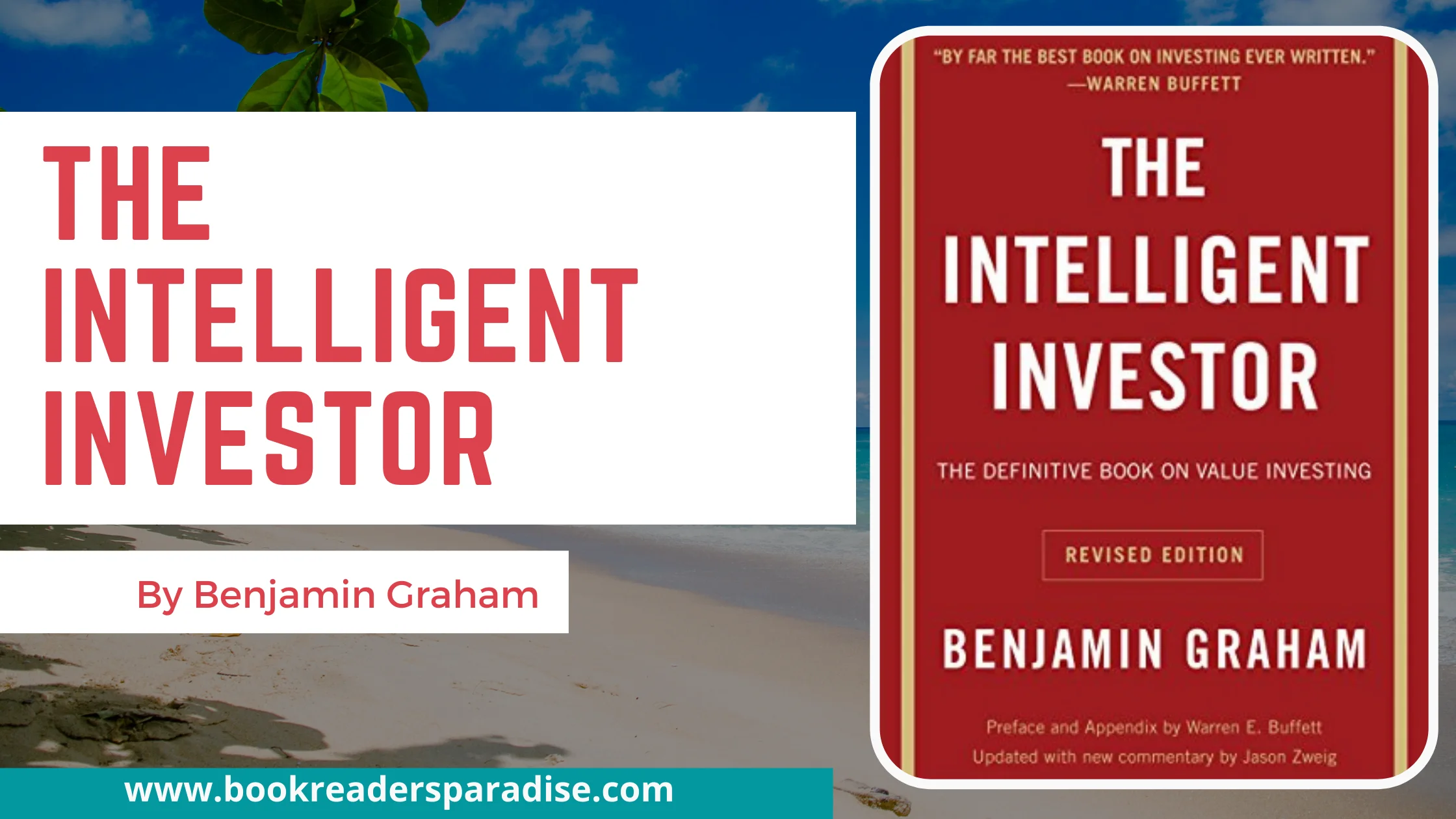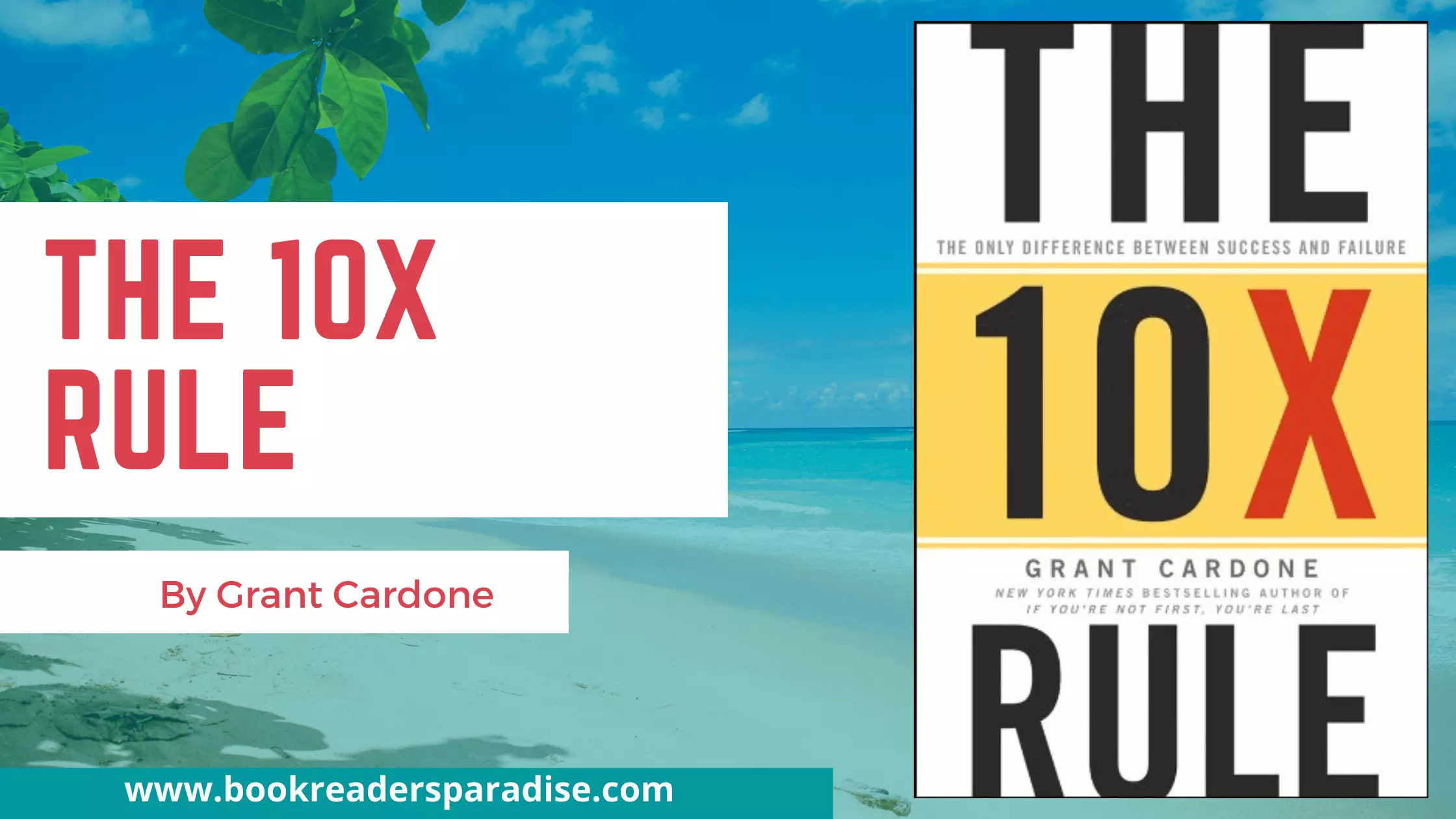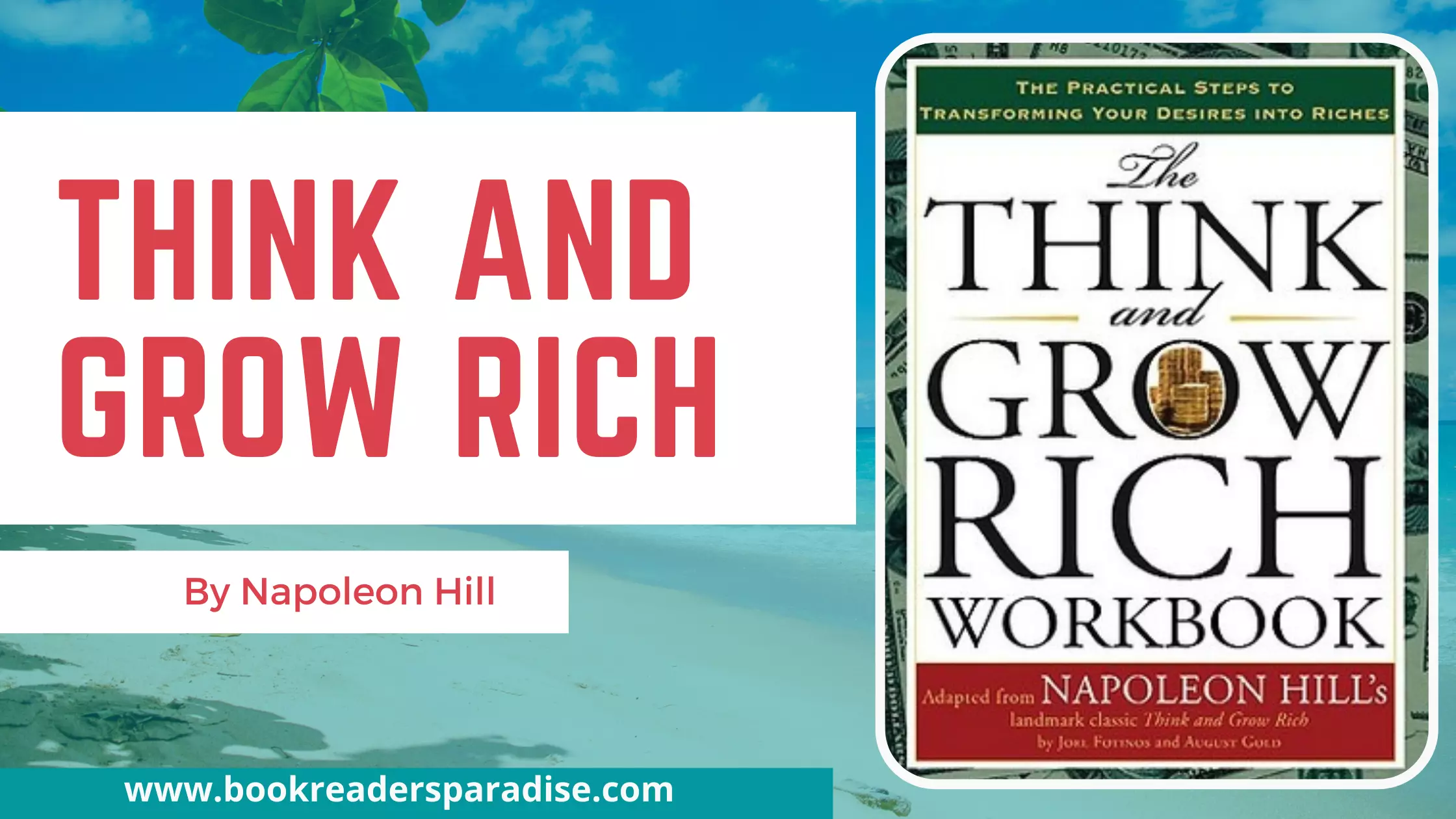The Intelligent Investor Book Details
Many people find it difficult to invest in the stock market, but The Intelligent Investor PDF can help them to minimize their risks. It emphasizes long-term investments and less risky investment tactics.
Graham advocates investing based on research instead of speculation & predictions. This book gives you tips on how to invest wisely and prevent Mr. Market from controlling your financial decisions.
Title | The Intelligent Investor |
Author | |
Publication Date | Revised ed. edition (February 21, 2006) |
Genre | Finance, Investing |
ISBN | 9780060555665 |
Language | English |
Total Pages | 640 |
Audiobook Duration | 17 hours 49 minutes |
Rating |
Also Read: Think Again by Adam Grant Book Summary
Who is Benjamin Graham ?- Author Details
Benjamin Graham was born on May 8, 1894, and he died on September 21, 1976. His specialization was in economy and investment, and he was a serious investor as well.
Graham is often referred to as the father of value investing. These are numerous investment strategies he taught in his business school back in 1928. Later on, David dodd refined & polished the concepts in Security Analysis and published several editions.
Several followers of Graham became successful investors themselves. Warren Buffett, Irving Kahn, and Walter Schloss are among Graham’s most famous followers.
Buffett describes Graham as the second most influential mentor in his life after his father and from whom he gained a strong intellectual investment framework.
Warren Buffett on Benjamin Graham: “Making money did not motivate him”
Also Read: Atomic Habits Book Summary
The Intelligent Investor Summary
This book has about 20 chapters, and we cover each chapter summary in this post.
Chapter 1: Investment versus Speculation: Results to Be Expected by the Intelligent Investor
A successful investment plan involves a sound investment strategy and offers an adequate return on your capital.
The three elements of investing are the following:
- Before acquiring a stock, you must thoroughly research a company’s underlying business.
- You must take intentional measures to protect yourself from loss.
- Aim for satisfactory results, not extraordinary ones.
Don’t mix up speculation with investing. If you are speculating, do not think you are investing. It is important to have strict wagering limits.
Chapter 2: The Investor and Inflation
The amount you retain after inflation can serve as a good metric for determining how successful you were in investing.
Stay alert to what is not expected or underestimated. Most investors ignore inflation. The share price fluctuates with inflation, so when the inflation rate fluctuates, the stock price fluctuates too.
Chapter 3: A Century of Stock Market History: The Level of Stock Market Prices in Early 1972
- Holding securities cannot be financed with borrowed money.
- Keep your proportion of common stock in your portfolio the same.
- We needed to reduce our holdings of common stock to 50% percent of the total portfolio. If you sell shares, any profits should be invested on a first-class bond, or saved in a savings account.
Whenever investors think that stocks will always earn money over time, then will not the market end up being too overpriced? If that happens, how is it possible that a high return is possible in the future?
There are three things that affect future returns
- Real growth – an increase in company earnings and dividends
- An inflationary growth – The rising price level throughout the economy
- Growth or decline in speculation. (increased/decreased investment appetite for stocks)
Also Read: The 48 Laws of Power Summary
Chapter 4: General Portfolio Policy: The Defensive Investor
Intelligent investing can be achieved in two ways
- Investing your time and effort into researching, choosing, and monitoring different stocks, bonds, and mutual funds.
- Or, You can create a permanent portfolio that runs on autopilot and does not require any additional work.
Traditional thinking suggests you should invest some of your money in the stock market and the rest in cash or bonds. However, this scenario is different for everyone.
Also, you need to consider your current life circumstances before investing in any stock and the amount you will be investing in it.
- What is your marital status and do you have kids? Are you paying for your parent’s care?
- How many years have you been working? Have you needed it as an income supplement? If that’s the case, bonds may be better
- Do you have enough money to lose?
Chapter 5: The Defensive Investor and Common Stocks
According to Graham, investors tend to overthink while investing, but the process is very straightforward.
- The first step is finding a promising company.
- Research about the company.
Nobody should invest in a company without analyzing its financial statements and assessing its business value.
Chapter 6: Portfolio Policy for the Enterprising Investor: Negative Approach
In some cases, we do not have to do anything and just have to wait for an extended amount of time to see real results.
Smart investors should have a long-term outlook. The person who is not able to hold on to stocks for more than a few months at a time will eventually fail and become a victim of failure.
Chapter 7: Portfolio Policy for the Enterprising Investor: The Positive Side
The goal of this chapter is to help investors understand the crucial role bargain-priced stocks play in the market.
Can’t you just pick the best performers out of your portfolio? Stocks with good records and promise often sell for higher prices.
It is possible that the investor is right about their prospects, but they will still not do well. Because he’s already paid the full price. Furthermore, growth is capped because of difficulty in repetition.
Also Read: The Psychology of Money Summary
Chapter 8: The Investor and Market Fluctuations
Market volatility is one of the most intense factors of the stock market. Investors often tend to buy and sell stocks based on their emotions rather than their judgment of the stock’s value. Most investors also aim for perfect timing in the market.
Other than that, they try to determine the future direction and trend of the market using various factors such as momentum and price. In Mr. Graham’s opinion, “it is ridiculous for the public to get any profits out of market forecasts”.
Graham emphasizes that the investor must use pricing when making buy and sell decisions. We should always remember that it is advisable to buy stocks below fair market value and sell them above fair value.
Investing simply means finding out the margin of safety associated with any stock and buying only those with a value below the intrinsic value.
This would result in a market that is efficient and stable. However, we know that this is not the case. We all know that the market fluctuates wildly from day to day, Some days are pretty good and some days are terrible.
Using the example of an imaginary investor, Mr. Market, he showed how investors could take advantage of market fluctuations.
It is a story about greed and fear, what investors face at the time of a market crash, and how an intelligent investor will react.
Chapter 9: Investing in Investment Funds
The defensive investor might find investment funds an appealing investment. These investments enable individuals to save and invest easily, possibly preventing costly mistakes.
In general, investors ought to expect average results. It is important to be aware of high trading fees, excessive trading, and unpredictable fluctuations in performance. It’s important to analyze the last five years’ performance.
Any significant performance should be viewed with skepticism. Portfolio managers may engage in speculative behavior when there is an increase in volatility. Most often, funds end up in significant losses.
One advantage of an investment fund for you is that it lets you diversify your portfolio efficiently and affordably. Investors who are unhappy with their average returns rates.
Individuals like that take unnecessary risks through speculative practices or fall prey to outright fraud schemes. Defensive investors might be satisfied with closed-end funds and index funds selling at a discount.
In general, a closed-end fund that has been sold at a discount produces greater profits than a traditional open-end fund.
Also Read: Think and Grow Rich Book Summary
Chapter 10: The Investor and His Advisers
Beginners are more likely to make mistakes than experienced investors. Examples of mistakes include losing a great deal, paying high fees, and not diversifying your portfolio properly. Which results in investors experiencing returns below average.
As an investor, you should look for an advisor from whom you can get advice. You must have a mentor who is conservative, guarded, and knowledgeable about investing.
A good advisor can protect you from your enemy and make sure you make the right decisions. Also, he will help us control our emotions at crucial moments.
Chapter 11: Security Analysis for the Lay Investor: General Approach
Chapter 12: Things to Consider About Per-Share Earnings
Chapter 13: A Comparison of Four Listed Companies
Chapter 14: Stock Selection for the Defensive Investor
Chapter 15: Stock Selection for the Enterprising Investor
Chapter 16: Convertible Issues and Warrants
Chapter 17: Four Extremely Instructive Case Histories and more
Chapter 18: A Comparison of Eight Pairs of Companies
Chapter 19: Shareholders and Managements: Dividend Policy
Chapter 20: Margin of Safety as the Central Concept of Investment
This book contains valuable information and many hidden gems. It’s difficult to cover it all in this specific article. So far, we have covered the overview of the chapters.
When you start reading the book, you will be introduced to the idea and world of investing, something you never imagined.
The Intelligent Investor PDF book will not only improve your skills relating to investments but also provide you with the right mindset and approach on how to deal with failures.
Also Read: 10x Rule Book Summary
Why You Should Read The Intelligent Investor?
I believe that this book may be the most insightful one ever written on investing, and it will endure through a lifetime.
The book doesn’t promise you the “How to make money fast”, “mastering stocks in a week,” or any other sh*t. This book teaches three powerful lessons about:
- To reduce the risks of incurring irreversible losses.
- To maximize your chances of securing sustainable gains
- Help investors achieve their full potential by controlling their emotional behavior.
This book discusses investment strategies that will benefit you in the long term. Investing for the short-term is the same as spending like a miser.
A smart investor will evaluate a stock’s value based on a few key factors, including the company’s long-term prospects, a management company’s quality, the company’s financial details, and dividend record.
The book is for people who want to know more about investing or just want to sharpen their skills and improve themselves. Investing is a serious endeavor that requires self-education; if you are considering investing, this book will help you get started.
Where I Can Download The Intelligent Investor PDF/Audiobook Free?
The Intelligent Investor Book is available in Paperback, PDF (e-book), and audiobook formats.
It will take a good amount of time to complete the book because it is 640 pages long. If you want to finish the book quickly, audiobooks are a better choice.
You can read or listen to the audiobook completely FREE in the following places.
Website | Paid / Free |
Free | |
Free |



